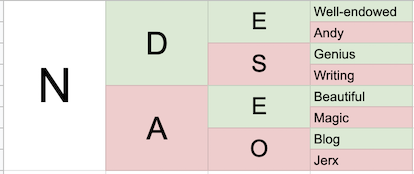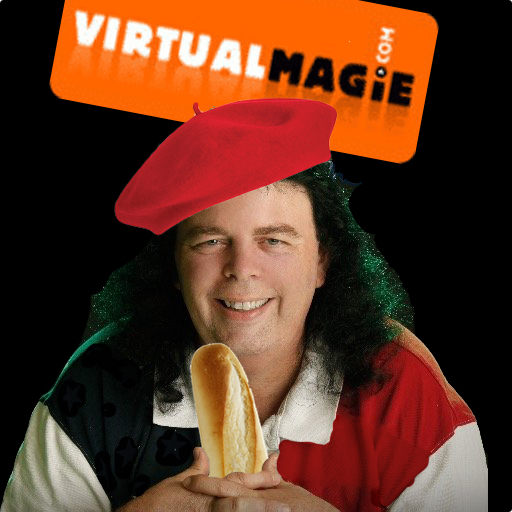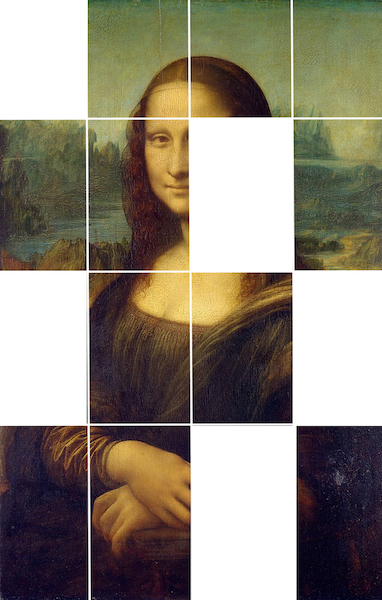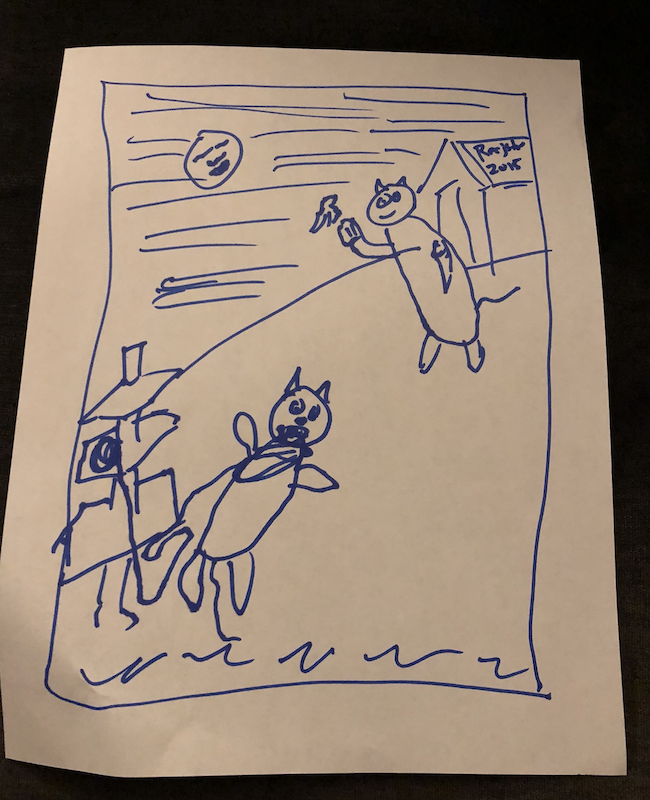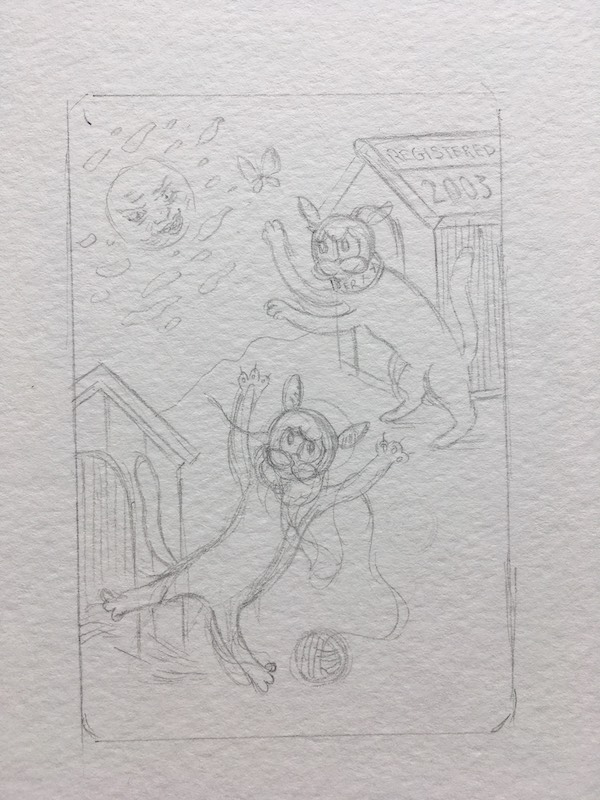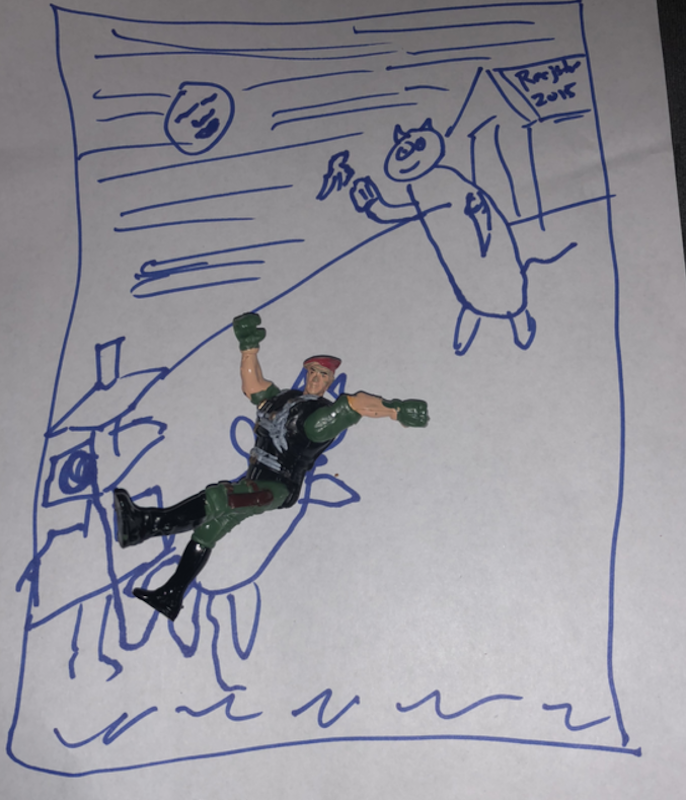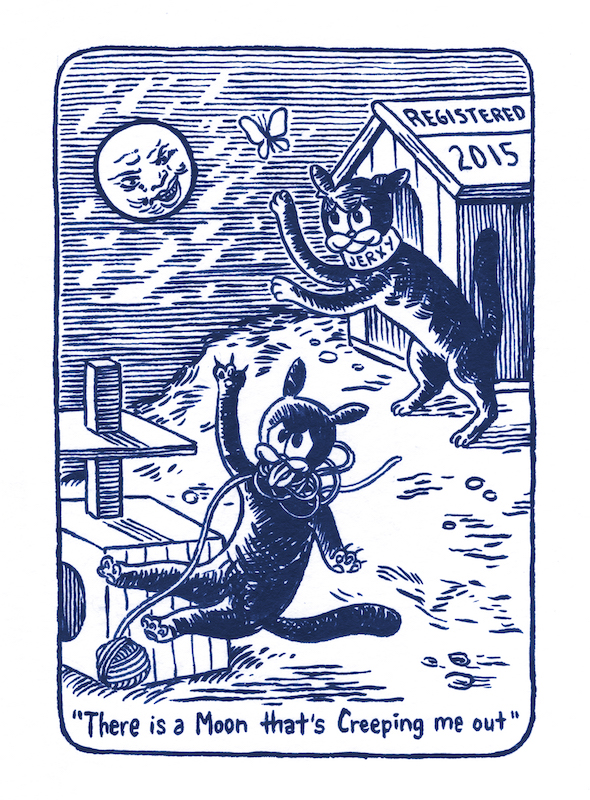Dustings of Woofle #6
/When I first looked at the thumbnail for this image, I thought it was a kid holding his big girthy penis out for all to see. Then I clicked on it and saw that it was actually a kid holding a high-heeled shoe. Which makes about as much sense as flashing his genitals for a fourth birthday card.
Actually, by the way he’s sitting and that look on his face, I still think it’s likely that the original image was him displaying his engorged member, and then the card company was like, “What the fuck is this, Carl? We asked for an image for a fourth birthday card.” So Carl touched it up and added the shoe. Look, you don’t sit like that when you’re polishing a shoe. He was polishing something else.
This is my roundabout way of saying: Grab your brush, grab your dong—The Jerx turns four years old today.
If you’ve got the cash to spend, I have a hot tip for you. Real Secrets was a magic subscription “trick of the month” service that ran for three years starting in 2012. I didn’t subscribe, but I had a couple friends who did and I saw a lot of the releases through them. I think my favorite was a set of cards that would allow you to do a “feng shui assessment” of your spectator’s home. You lay out the cards indicating different rooms in the spectator’s house. They would move their finger around the cards, making free choices in accordance with some pre-written instructions. At the end, their finger would be on one room, indicating there was a feng shui disturbance there. Let’s say it’s the bathroom. You then go with them to the bathroom and find, for example, a desk chair in their shower. “Ah yes. That’s bad feng shui,” you say.
The Real Secrets tricks tended to be smaller, more casual pieces. The type of thing you could keep in your wallet and have on you to bring out during a lull in a social situation. They weren’t the types of things you would build a show around. But that was the allure of them for me. They had a different feel to them. For the most part they weren’t card or coin tricks. They were tricks with some junk you had on you.
At any rate, I recently got an email from Michael Weber that said:
Tim [Trono] went through storage and found three complete sets of all three years of Real Secrets props and instructions (72+ items in all)
He assembled them in special binders with separate holders for each month of props and materials and archival page holders.
They will be $600 + $50 postage worldwide.
If they don’t get snatched up I’m going to get one myself, even though I’m familiar with a lot of the material already. This isn’t an ad. Just a “heads-up” for anyone who might be interested. [Update: You can’t get one of these anymore. They’re gone.]
Alakazam is selling a download to use Alexa as part of a card reveal.
If you’re interested in that sort of thing, I did a few posts early last year about using Google Home (and by extension things like Alexa and Siri) in magic tricks. Those posts are:
Google-Home Word Reveal
Another GH Idea
The Connor-Combs-Jerx Code
I’m sure the Alakazam product is fine. If it simplifies the set-up then it will be worth the asking price for anyone who wants to do this. But as someone who spent a few months playing around with different revelations with Google Home and Siri, I can tell you that playing cards generally got me the weakest reactions when using these devices. Most likely because it feels just like a card trick with the technology bit added to the end. Whereas—if you’re using the ideas in the first and second posts linked above—you can ease people into the trick before they know what’s happening. So they have this experience:
We’re talking about the technology.
He’s going to show me something weird about the technology.
Wait… what?! That’s impossible. That must be a trick.
As opposed to this experience.
He’s asking me to pick a card. This is a card trick.
Oh, I guess the technology is going to name my card.
Yup. That was a card trick.
If you’re interested in this plot I would also recommend checking out Marc Kerstein’s book on iphone tricks which allows you to do this effect and a bunch of better stuff.
Regarding the previous post on building Transgressive Anagrams, Pete McCabe has built a spreadsheet that parses the words you’re using for the letters they contain. So you don’t have to do that first step manually like I do.
Below are two versions of the spreadsheet. It currently has the top 16 money-making films at the box office, but you can replace those items on the left for whatever it is you want to create an anagram for. And you can add or remove rows as necessary, assuming you have some basic spreadsheet knowledge.
Excel/Google Sheets spreadsheet
UPDATE: Here’s a modified version of Pete’s Excel spreadsheet from Casey Edwards. (You don’t need Excel, it works fine in Google Sheets which is free.) It adds a row for filters, which makes manipulating the spreadsheet and trying out different combinations super easy. You can essentially follow my same process as laid out in Wednesday’s post, but just create a bunch of copies of the initial tab in your spreadsheet. Then, instead of doing a lot of copying and pasting, you just apply the necessary filters in each tab and re-name the tab so you can keep track of everything. This is probably the ideal combination of both automation and control when it comes to creating anagrams.
Thanks, Pete and Casey.
Dai Vernon said, “Confusion is not magic.”
Emerson & West said, “Except… what if it is?”
I think at the end of this trick, when the card says “Hole” on the back, you’re supposed to get that surprise that you get when you see the $14 card in Color Monte. But I have a hard time believing it ever generated that kind of reaction. The trick is way too fucking convoluted. I honestly felt like I had early onset dementia watching this trick. I have no clue what is supposed to be happening. I guess some might say that it’s supposed to be confusing. Okay… well… mission accomplished, I guess.
Actually the best part about this trick is when the guy acts like he’s grabbing a horse’s balls at 28 seconds in.
For you younger readers, Emerson & West produced magic effects, starting in the 70s. They were most famous for their packet tricks, in particular, Color Monte. Is the concept of “packet tricks” even well known to younger magicians these days? If it is, they probably think of tricks done with a small “packet” of normal cards. Whereas, when I was growing up, I usually thought of packet tricks as being comprised of specially printed cards like this:
And they came in a little plastic wallet, and you’d have a trick where you’d do, like, 40 Elmsley counts with them, and at the end there was a mild surprise or shitty pun or something. Then your spectator would say, “Can I see your fun little magic cards?” And you’d have to knock over a bookcase between the two of you and sprint away because frequently they weren’t examinable.
Very few of these tricks stood the test of time.
Why am I watching packet trick videos on youtube? Well, I recently stumbled into a way of presenting Color Monte that went over shockingly well and I was wondering if I could find other packet tricks I could apply a similar presentation to. I didn’t really find any, but I’ve done the Color Monte version a few more times recently and it continues to get absurdly strong reactions. I’ll write that up sometime in the next few weeks.
As I mentioned, this site turns four years old today. Thanks, in advance, for all the gifts, cake, and birthday spankings coming my way.
Will this site see another four years? No, probably not. I might let it go until six and then kill it (like JonBenét Ramsey). But who knows. I never saw it going this long. The only reason it has is because of the people who support the site. So thanks to those of you who do; whether you just found the site recently or whether you’ve been here since the beginning. I couldn’t write the greatest site on the internet without you.







